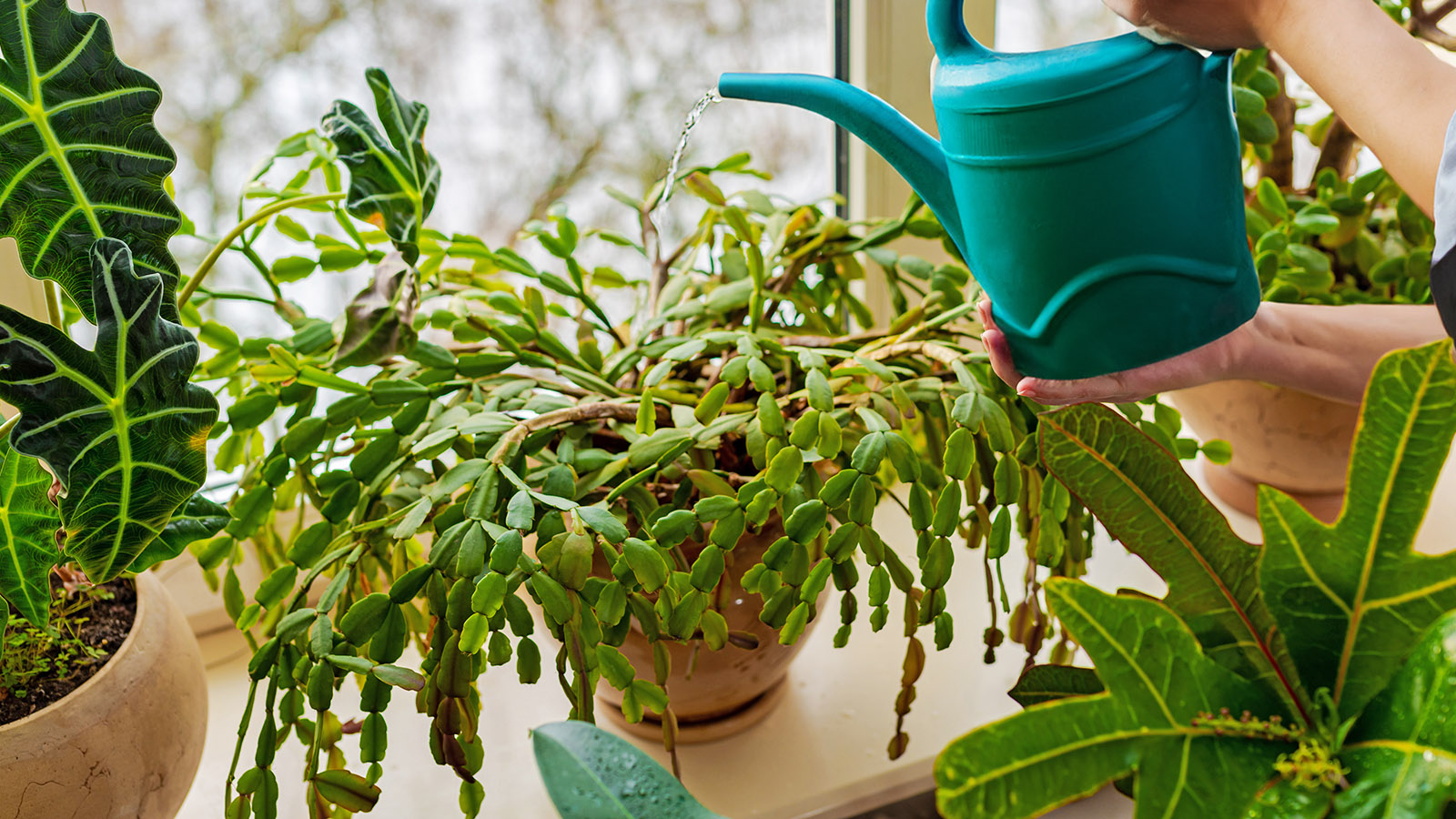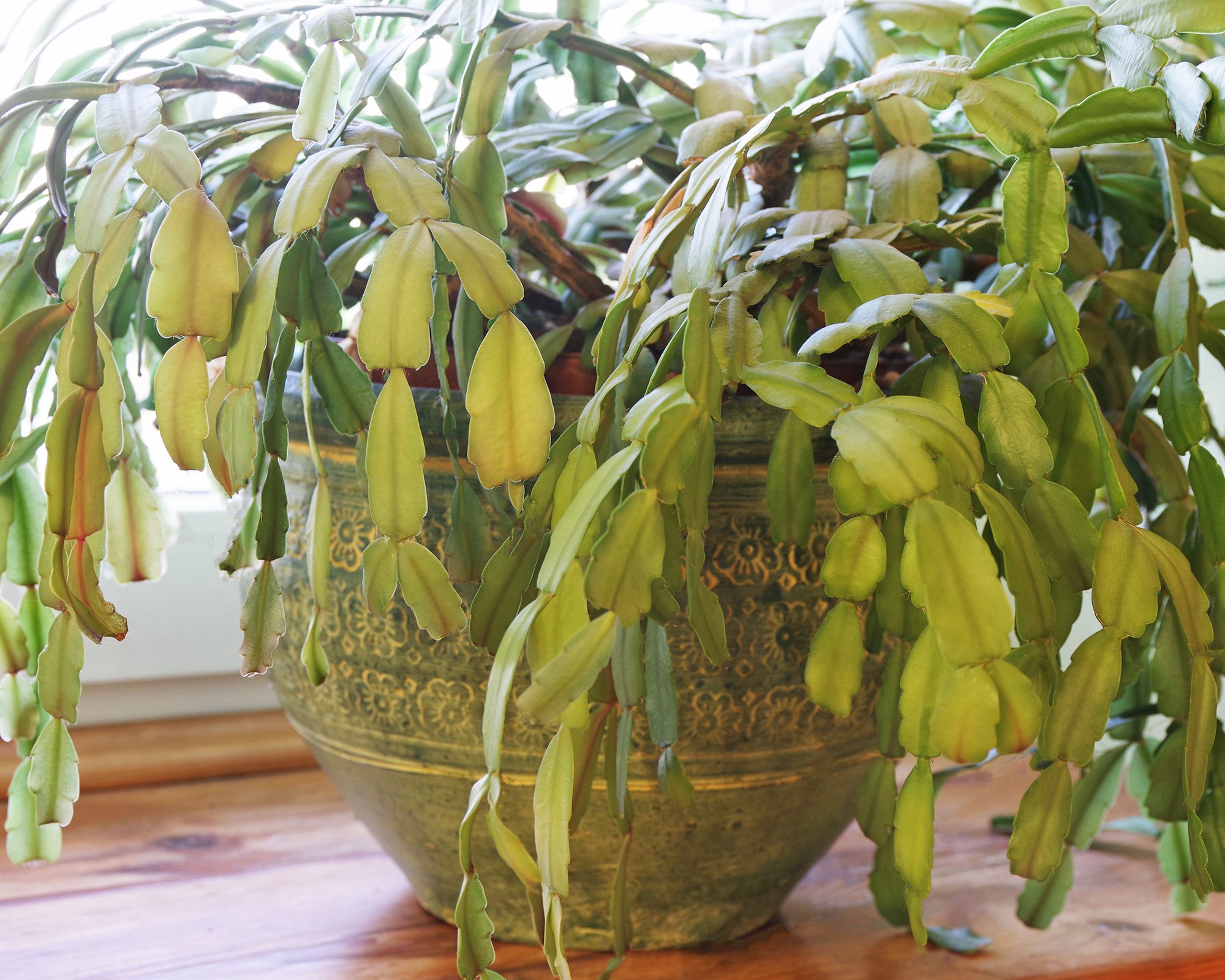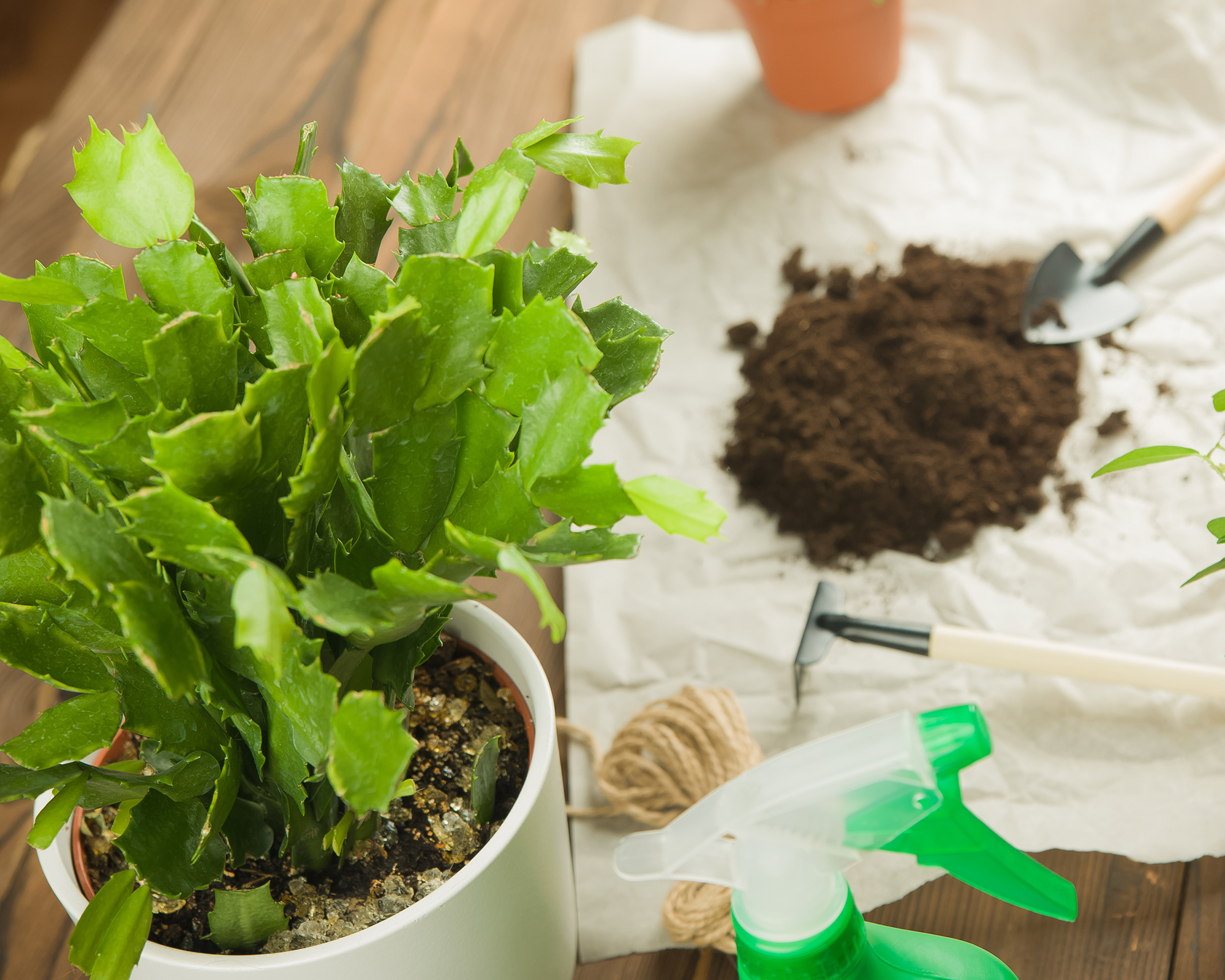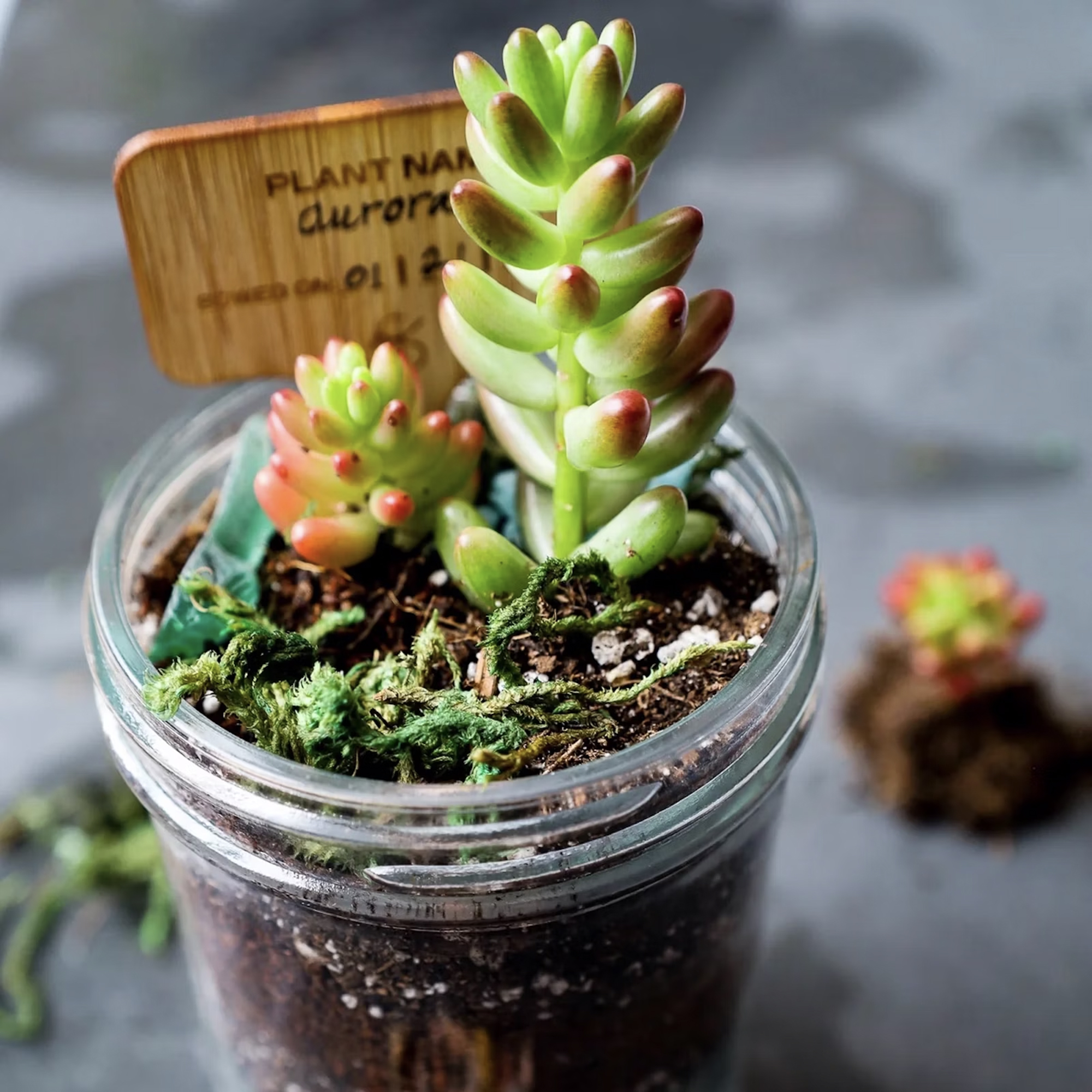
If your Christmas cactus is looking a bit peaked, the most likely cause is overwatering. While all plants need moisture to survive, overzealous watering can lead to serious issues like root rot. If you suspect you are dealing with an overwatered Christmas cactus, then you need to act fast to dry out the plant and restore it to blooming vitality.
Christmas cacti (Schlumbergera x buckleyi) are low-maintenance tropical succulents. While they require watering more often than desert cacti, they prefer being slightly underwatered rather than overwatered. Growers often overwater their plants after a period of neglect to “perk” them up, or they may just have a heavy hand with the watering can.
Overwatering is one of the classic Christmas cactus problems, so don't feel too bad if your plant starts exhibiting symptoms. However, early diagnosis is vital, and you will need to change your Christmas cactus care routine, to prevent reoccurrence.
Follow the below advice to bring plants back from the brink. In addition, if you have overwatered one of the other types of holiday cactus, then you can follow this advice to save them, as Thanksgiving cactus care and Easter cactus care are broadly the same.
Dangers of Overwatering
Christmas cactus watering is a delicate balance, with both under and overwatering causing issues for plants. However, overwatering is a bigger problem. Any cactus that has been allowed to sit in a saucer full of water is likely to have its health reduced.
If left unchecked, an overwatered Christmas cactus can develop crown rot or root rot. These diseases are serious and it may not always be possible to save the plant.
Perhaps most disappointing for growers is that making a Christmas cactus bloom will be almost impossible.
Sign up for the Gardening Know How newsletter today and receive a free copy of our e-book "How to Grow Delicious Tomatoes".
What Does an Overwatered Christmas Cactus Look Like?
An overwatered Christmas cactus will show obvious signs of distress. Check for wilting, leaf drop, yellow foliage, red or black legions, and soft, mushy stems. Where root rot or one of the other common Christmas cactus diseases is present, these symptoms may be accompanied by mildew or fungal bodies on the soil surface.
If the disease has progressed, remove the plant from the soil; the evidence will be in black or brown, mushy, and foul-smelling roots.
All of these signs are bad. They mean your plant is in trouble and you need to take steps to repair the situation if it's not too late.

How to Save an Overwatered Christmas Cactus
A Christmas cactus that has been drenched for some time may be past saving, so before treating your plant, learn how to propagate a Christmas cactus from root cuttings, so all is not lost if it does not recover.
If you discover the problem in time, there are some steps to take to help your plant rebound:
- First, remove the plant from its container. Rinse the roots to get rid of any soil or fungus so you can get a good look at them. If they are black in color and give off a fetid odor, the plant is probably not saveable.
- If the roots still look fairly good, remove any that look bad with some clean, sharp scissors. Also, remove any stems that are rotten at this time.
- Let the plant dry out for a day on the counter.
- The next day, repot the Christmas cactus in clean, well-draining soil in a container with adequate drainage holes.
- Place the cactus in an area that gets 6-8 hours of sun per day.
- Let the new soil stay dry for a day or so before beginning a regular water regimen.

Avoiding Overwatering
Preventing an overwatered Christmas cactus is simple if you water on demand, rather than on a schedule. Every couple of days, push your finger into the soil – if the top inch or so feels dry, then it's time to water. If you find it difficult to know for sure, then invest in a soil moisture meter.
Water generously, allowing the excess water to fully drain through before returning the cactus to its saucer or outer pot.
If the saucer or outer pot looks moist a day after watering, dump the excess water to prevent moisture gnats and keep the roots from rotting.
To prevent overwatering, it's also important that the potting mix is well-draining. The ideal Christmas cactus soil mixes in sand, perlite or vermiculite to aid drainage.
Overwatered vs. Underwatered Christmas Cactus
In fear of overwatering your Christmas cactus, don't err too much on the side of caution and risk underwatering. Neither over- or underwatering a Christmas cactus will make it happy.
An underwatered Christmas cactus will likely have puckered or wrinkled foliage. Leaves may turn brown and drop from the plant. If you touch the leaves, they will feel flat, not plump and fleshy as a healthy Christmas cactus would.
Because the plant’s common name includes the term “cactus” many growers think the plant needs little to no water like other cacti. The fact is that Christmas cacti are not true cacti. Rather, they are epiphyte plants also categorized as succulents. Their fleshy leaves do contain some water, but the plant still needs water at its roots.
Sometimes, growers, in a panic after realizing they’ve forgotten to water in some time, drench the cactus. This is problematic as the plant's vessels will have shrunk, decreasing their capacity to absorb water. Overwatering after a period of underwatering is a quick recipe for disaster.

Amy Grant has been gardening for 30 years and writing for 15. A professional chef and caterer, Amy's area of expertise is culinary gardening.
- Bonnie L. GrantWriter
- Melanie GriffithsEditor in Chief
- Amy DraissDigital Community Manager

